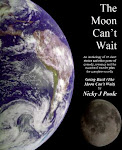James Lovelock, of the Gaia Hypothesis fame, had, when he worked at NASA, a simple job – to find life in the Universe (other than here on Earth, of course.) More specifically, NASA wanted to know: if they found a planet, how could they tell there was life on it? After all, this planet would probably be very far away and it would be a long time before they would get a closer look. What would be the one clue that would give away that life was present at a distance.
Lovelock soon came up with the answer. Oxygen. If oxygen was in the planet’s atmosphere, then life would have to be present. This is because there is no geological way in which a planet could generate an oxygen atmosphere. It would need life to produce it. Lots of planets might be expected to have carbon dioxide, and life can evolve in such an environment combining carbon dioxide with water, and the energy of sunlight, to create things like sugars, proteins, fats and the like. But in doing so, they would give off oxygen. The presence of oxygen would be the clincher that there was life.
(Ironically, the carbon dioxide-breathing life would eventually so ‘pollute’ its environment with oxygen, that it would die out. But by that time other life that still needed carbon dioxide but could live in the oxygen, as well as life that depended on oxygen, would have evolved.)
The only prerequisite was water. Water is the most amazing chemical compound in the Universe. Now there might be a few other contenders for that title, but there are probably all more complicated chemically than water. Where water wins is with its simplicity. It does so many amazing things, such as dissolve other chemicals, just for one example. Other chemicals can also do this. But most of them are more complicated than water. One molecule of water is made of one atom of oxygen and two atoms of oxygen. The most amazing thing is that, with these components, it should be, at room temperature, a gas. But it isn’t.
This and other properties make it essential for life. Life simply cannot exist without it. It plays a vitally important role in just about every process in all living things – in fact a living creature has been sometimes described as the way a bag of water gets around. And all because it’s a liquid.
Lovelock could have told NASA ‘Look for water,’ but that wouldn’t have been the clincher for the presence of life. A planet might have water but no life. But a planet that has no water can not have life. Absence of water is the clincher for no life. So why is water a liquid at ordinary temperatures?
The reason is something called the Hydrogen Bond. A hydrogen atom is extremely simply, just a heavy particle at the centre, which is also known as the nucleus, called a proton, that is positively charged, and whizzing around the outside a wispy light little particle called the electron. The electron occupies what is known as a partial shell – there is room for more electrons – but no charge at the nucleus to attract them. Despite being so light, an electron has the same amount of charge as a proton, only it is a negative charge. This generates a tremendous amount of attraction between the two particles but, for reasons we can’t go into here, the two virtually never get together. (In fact this whole model is a simplification, but it will do for now.)
Oxygen is rather more complicated but in essence it has several electrons on the outside in an arrangement of partial shells that causes oxygen atoms and hydrogen atoms to join together in what is called a covalent bond. This is a true chemical bond and is, unless some other chemical activity takes place, permanent. This type of bond shares all the partial-shell electrons available to form something that looks like a full outer shell. This means that the water molecule cannot form another chemical bond with any other atom or molecule.
That is not the end of the story though. The covalent bond has a shape that is uneven, with the result that, one side, the positively charged protons in the molecule are partially exposed. On the other side, are electrons that are in lone pairs, having nothing to do in the covalent bond, and are negatively charged. This negative side of one water molecule makes it attractive to the exposed positive protons in another. This makes the two molecules tend to stick to each other just a little bit. This is a hydrogen bond. It’s what makes water into a liquid at ordinary temperatures, and therefore is what makes life, everywhere in the Universe possible. This is even though it may last for only one ten-trillionth of a second. Pretty amazing, isn’t it?
That isn’t the end of the story of how crucial the hydrogen bond is to life. Hydrogen bonds can occur in other molecules where proton of the hydrogen nucleus is exposed to electrons of another molecule. All living things need to make copies of themselves in order for the species to continue to live. An extremely complicated chemical, called deoxyribonucleic acid, DNA, is needed for this. We can make it seem simpler by breaking down how it is made. It includes a sugar, called deoxyribose, a phosphate and four kinds of chemicals called bases. These bases fit on the inside of the molecule between the sugar-phosphate parts. All this is not terribly important for what we are looking at here. What is important is that the molecule is made of two complementary strands twisted together in what’s called a double helix. What is meant by complementary is that they fit together a bit like mirror images of each other. So, split the two strands up and you can make one molecule into two identical molecules.
Just one last thing. It was a lie to say a double helix is a single molecule. It is in fact two separate molecules! What holds them together is hydrogen bonds. Remember the bases that fit inside the sugar-phosphate backbones of the two twisted strands? These bonds are at the ends of the base pairs, holding them together like the teeth of a zip fastener. These bonds unfasten when the DNA unravels to create two copies. Without the hydrogen bond, the double strands of DNA could never hold together nor keep their famous double-helix shape. Nor pass on hereditary information from parent to offspring.
So, without the hydrogen bond, James Lovelock, and you and I, and life in the Universe, would never have existed.
Pretty magical, huh?
.jpg)






No comments:
Post a Comment